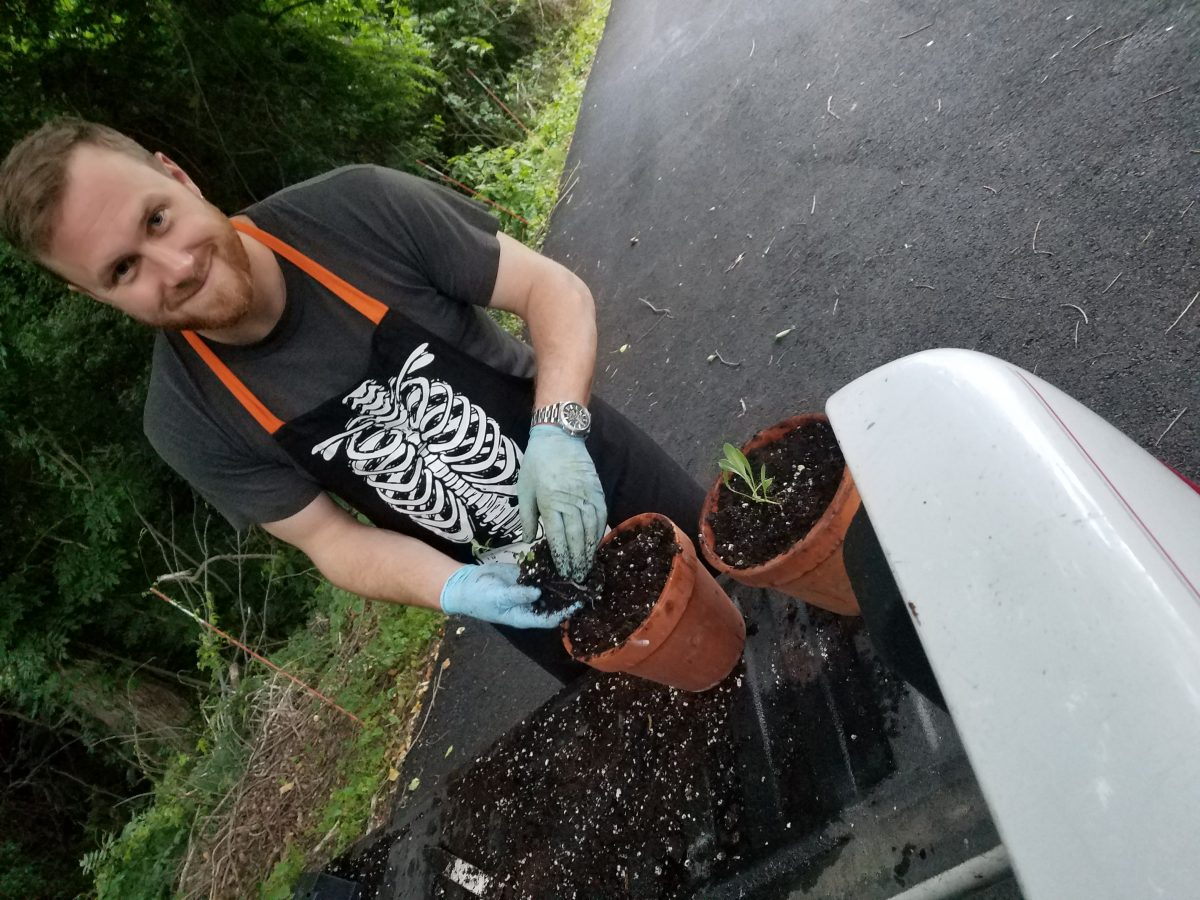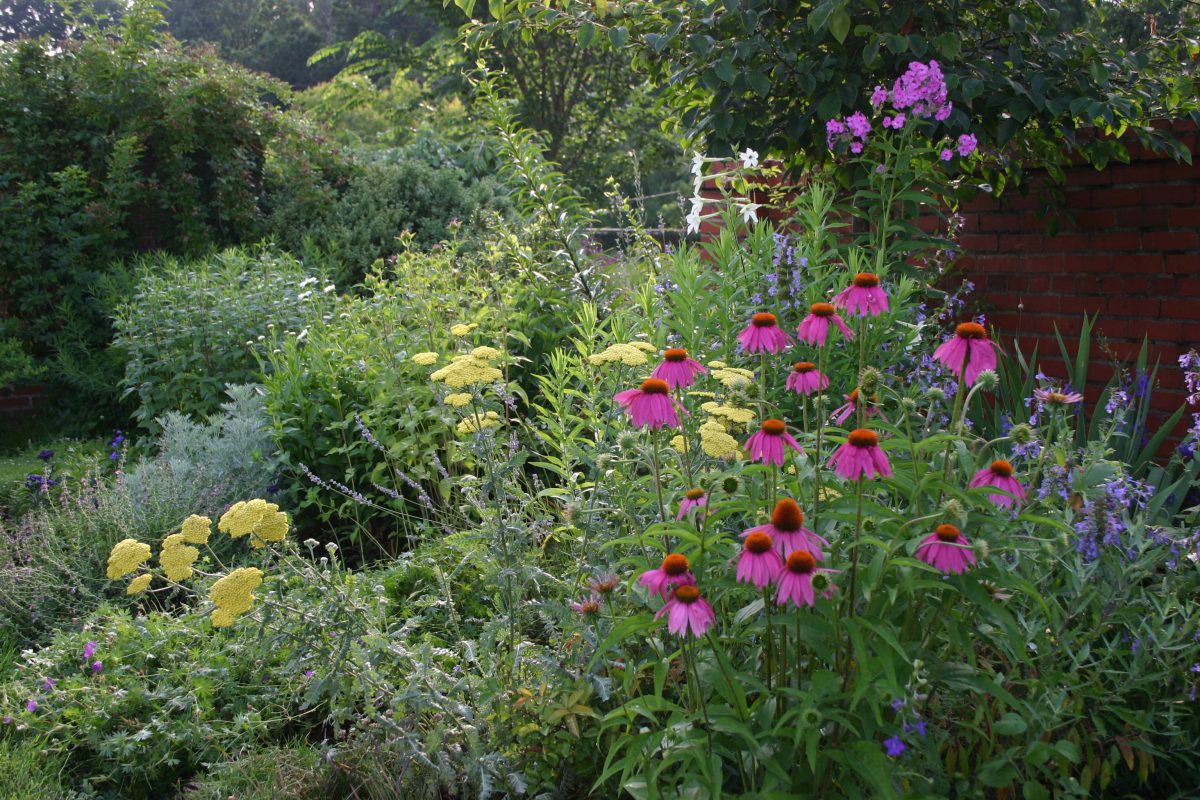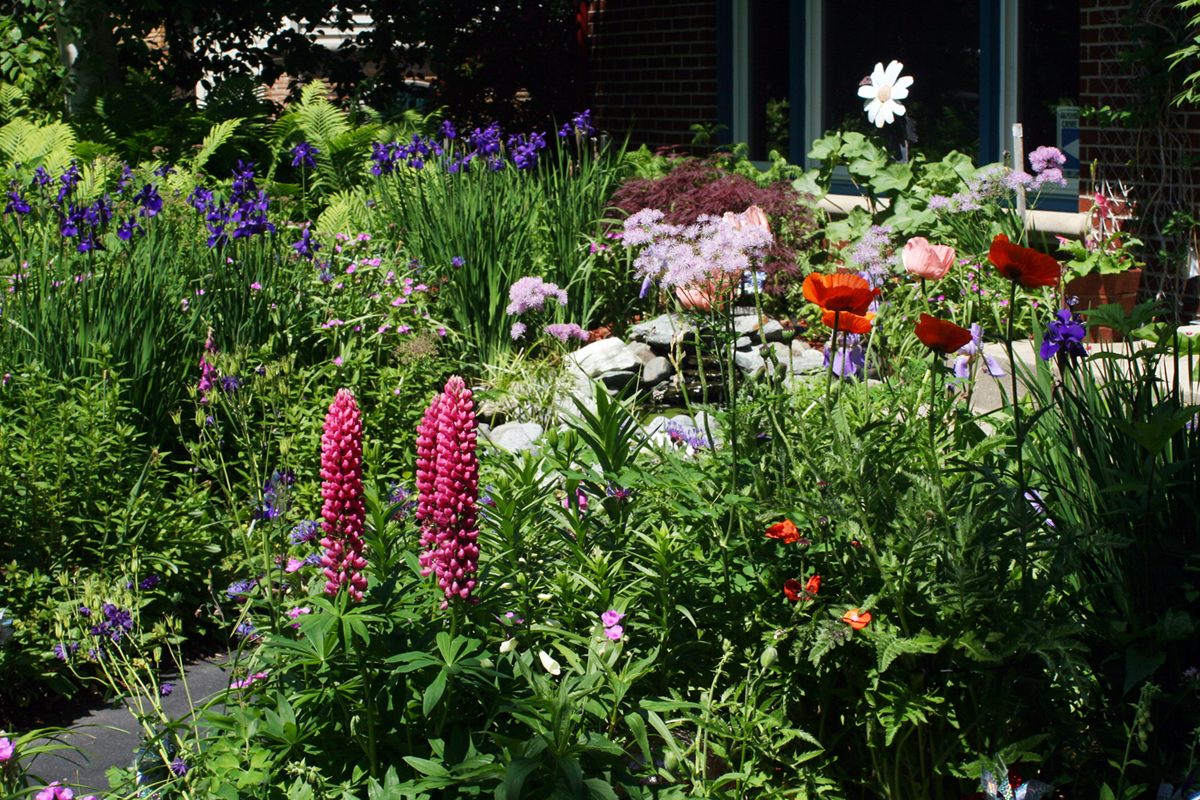This post contains affiliate links.
When it comes to backyard conservation, one of the best things you can do is heed nature’s cues, says to Dan Scott, associate director, horticulture and River Farm for the American Horticultural Society.
“It is always best to work with the land that you have, not the land that you want,” he says. “If your site calls for a wetland, but you want a prairie, you can certainly spend the time, money and resources to fill the land, grade the earth, redistribute natural waterways, or you can see the beauty in nature, and let the earth guide you down the right path.”
With the average size of a yard in the U.S. just 10,871 feet, or roughly a quarter of an acre, many may wonder whether achieving backyard conservation is even possible. According to Scott, it is. It just requires a holistic approach.
“As a homeowner, you need to find the appropriate balance between your own needs and desires and what nature has given you.”
“It involves becoming intimately familiar and comfortable with your space, thinking about what the needs of the local flora and fauna are and how you can contribute to their success and their health,” Scott says. “It’s more than just composting your veggie scraps and applying that to the beds. It’s taking everything into consideration.”
Creating a thriving backyard ecosystem, however, doesn’t have to be onerous.
Scott encourages people, especially those who may be new to gardening or simply want beautiful flowers growing in their backyard, to just start somewhere. “Buy what you love and make yourself happy because planting anything is better than planting nothing,” he says. “Make yourself happy, and that will encourage you to go out and do more of it.”
Yet he urges people to, at the very least, select plants adapted to their region to increase their chances of success.
“As a homeowner, you need to find the appropriate balance between your own needs and desires and what nature has given you,” Scott explains.
Because understanding what works best in your region and backyard can be complex and growing and maintaining plants takes time and energy, Scott emphasizes the importance of being honest with yourself.

“There tends to be this mentality of ‘Oh, [I’ll] just put it in the ground and water it, and it will grow.’ It’s very easy to do that,” he says, “but you really have to take into consideration your free, available time. Plants are not sentient creatures, but it’s still disappointing and depressing to put the time and energy — and also money and effort — into planting something that you are incapable of appropriately managing.”
This is why Scott recommends working with local gardeners or plant societies to become familiar with the plants you’re working with. Internet research, he says, is only useful to a point.
“It’s very easy to try to plant based on what a plant label says or what a [website] says, but oftentimes, that’s very rudimentary information, and it’s not taking into consideration your particular area,” says Scott.
While he doesn’t claim to be a “native-only” guy, Scott does note that native plants — those that occur naturally in a given area — tend to do better when planted in the regions for which they are adapted.
Additionally, some research has indicated that native plants may serve as a better food source for insects and animals. According to Scott, birds have been known to eat native holly species before consuming non-natives. “And in some cases, they won’t eat [non-natives] at all,” he says.
“I’m not saying you shouldn’t plant those selections, but if you’re going to, you should consider planting the other straight native species as well,” says Scott. Growing natives — when in the proper region — however, is fairly easy, given that they are doing what they tend to do naturally.
Generally, though, Scott believes that “native” is an overused, misunderstood term with regard to plants.
“If you have neighbors, check out [their] yards and see what’s working well for them. If it works well for them, then there’s a good chance it would work well for you.”
“If you live in Ohio, a plant that’s native to Toronto is more likely to be native to your region than a plant that is native to Texas, which is more likely to share plants with Mexico,” says Scott. “So it’s not thinking in terms of man-made borders; it’s in terms of the environment.”
He recommends buying native plants locally, when possible, as he says they will be “genetically adapted to your specific region.”
“Buying a plant that’s native to Virginia but is grown from stock that was collected in Oregon may not be the best solution,” says Scott. “Not to say that you absolutely shouldn’t do it, but to really get the healthiest plant, consider going with something local.”
Where to Start
For those getting started, the first thing Scott recommends is a soil test.
Depending on where you live, this is often a free or cheap service offered by your local agriculture extension which will provide you with basic information about your soil type and, thus, the plants best suited for your area. If necessary, apply some fertilizer to improve the soil; follow that up with another soil test to see if it helped address any issues.

Next, make some observations.
“Spend a little time monitoring the travel of the sun across your property. Spend some time monitoring what insects are there,” says Scott. “If you have neighbors, check out [their] yards and see what’s working well for them. If it works well for them, then there’s a good chance it would work well for you.”
With only a quarter acre, give or take, it’s important to think about how to best utilize your space. Scott recommends thinking beyond just your lifetime when it comes to planting. “If you’re going to plant a tree, consider what the impact of that tree is going to be 25 years from now,” he says. “Is it going to grow into the power lines, is it going to grow into your neighbor’s yard, [where] your neighbor [is] going to butcher it?”
Yet even in such a small space, he says it’s possible and critical to diversify.
“Diversification is very important, not just to provide different food sources for insects and wildlife but also in the event that there is some sort of disease — virus, blight, an emergence of an apocalyptic locust horde,” Scott notes. “The more variety of plants you have available, the more opportunity you have for plants to succeed.”
“When you plant in monoculture, one event can wipe out everything you own. We’ve seen it with things like Dutch Elm Disease,” he adds. “Thus, genetic diversity is important to developing a healthy ecosystem, even in a small backyard.”
Additionally, having a wide variety of plants can help attract an array of insects as many are “host specific,” Scott says.
Other steps you can take to make your backyard a welcome place for insects and wildlife is by providing a water source and habitat. Scott says that people often either don’t know or forget that in addition to food sources, pollinators need water.
“Just having something for the bees and other pollinators to get water from goes a long way,” he says. “That can be as easy as a bird bath with some stones in it or overwatering an area a little bit.” (To prevent mosquitos, change the water out regularly so that the larvae won’t have time to mature, Scott says.)
He also advises leaving dead plants up through the winter as many insects overwinter in the stems. If you can’t help yourself, he suggests cutting them down by hand and stacking them in a corner of your yard until spring.
“It’s not just that you need pollinators, you also need insects as a food source for your birds and for a lot of other beneficial insects that eat other bugs,” says Scott. The praying mantis, in particular, is a good one to keep around as it consumes a multitude of pests. “You really do want to create as much biodiversity with the insects in your yard as possible,” Scott adds.

Taking on Pests
Of course, not all insects are beneficial.
To manage pests, first determine whether they are truly causing a problem that needs to be dealt with, says Scott. “All creatures eat something, and sometimes it is your prized plant,” he says. “Be realistic about whether the pest is causing a health issue or if it is just making the plant unsightly.”
If it is a problem that needs addressing, Scott recommends beginning with the least-invasive remedy. This often involves simply removing insects by hand. If that doesn’t work, try a natural pesticide — like d-limonene, which is made largely from citrus oil — before moving on to “more toxic chemicals,” he says.
When it comes to soil erosion, according to Scott, issues can often be managed via strategic planting. He says the source will help determine the best approach: “Can it be dealt with by simply re-grading the area? Can you install a rain garden to slow the flow of water? Can you install water-loving trees and shrubs to hold the soil and break the flow of water?”
Improving Performance
“Composting is an important part of the conservation-minded garden cycle,” notes Scott.
While there are plenty of products on the market to help in this area, “composting can also be as simple as keeping a bucket or two around for non-meat and non-dairy kitchen scraps,” he says.
Applying mulch is also an essential practice for backyard conservation. “Proper mulching can help cool soil temperatures and retain water, smother weeds and add organic material back into the soil,” says Scott. “Nature provides its own mulch in the form of downed leaves, fruits, bark and branches. Wood chips, complete with leaves and bark, simulate that effect as their makeup is more representative of what would be found in nature.”
Stepping Stones to Conservation
If a plant fails, don’t be afraid to try again. Because there are a number of outside influences that can cause a plant to die, Scott urges people not to see such a failure as an indicator of their abilities as a gardener. “Just look at it as an opportunity to try again with something different or better,” he says, adding that you shouldn’t hesitate to remove a plant if you realize it doesn’t work in a space or that you don’t have the time necessary to cultivate it.
“As you garden an area over time,” says Scott, “you’ll develop sort of an innate sense of what it needs and when it needs it.”
Ultimately, Scott says that conservation means taking a holistic, integrated approach to managing your land — “be it a little townhouse backyard, 25 acres or 15,000 acres of public land,” he says.
“Try to take small steps toward living a more conservation- and stewardship-minded gardening life.”
If you don’t have space for a rain barrel, place a bucket under a downspout to collect water for house plants. Instead of adding inorganic fertilizer to your soil, compost. “Does that dead tree pose any danger to life, limb or property? If not, consider leaving it standing as habitat for other creatures,” Scott says. “If it is a threat, can the trunk be lowered and left standing, or can the logs be used as a feature in the garden?”
“Also, try not to think of insects and wildlife as evil. Sure, the squirrels may dig up your new plants, but are they really hurting anything, or are they just doing what squirrels do?” he adds. “Try to live in harmony with nature.”
Conservation, Scott says, involves striving to address everyone’s needs. This includes your own.
“Grow plants because you love them, and garden because it makes you happy,” he says. “Try to take small steps toward living a more conservation- and stewardship-minded gardening life.”
This can be as easy as collecting seeds from your plants as opposed to buying new ones every year.





